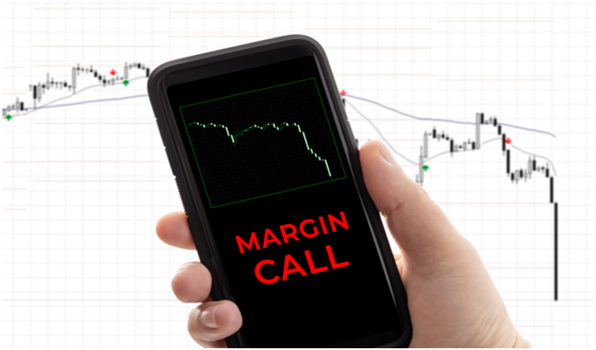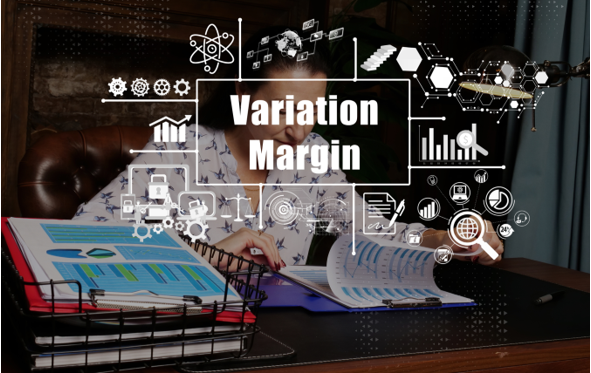What is Variation Margin?
Variation margin is a popular term used in futures trading. Variation margin, also known as Mark to Mark Margin, is additional cash that an investor needs to deposit to their trading account to maintain adequate money for loss deduction after losses have occurred.
It is also essential to understand the initial margin and maintenance margin while understanding the variation margin. In the business world, variation margin is one of the collaterals that provides security from any loss or default. The variation margin is to be paid by the clearing members daily or intraday basis to reduce the chances of risk caused by clearinghouses.
The variation margin is also another excellent method of raising capital inflow in a margin account to reach the maintenance margin level, which is the minimum balance usually much less than the initial margin that needs to be there in a margin account. The variation margin depends on several factors such as the type of assets, market trends, and expected price fluctuations.
Summary
- Variation margin is the cash that an investor deposits to his margin accounts to maintain adequate money for loss deduction after losses have occurred.
- There are mainly two rules involved with variation margin, i.e., the maintenance margin level must be at least 25%, and there is no need for transferring variation margin after a certain point of time.
- The variation margin acts as an entity that protects the ones involved with the margin account from incurring losses.
Frequently Asked Question (FAQ)
What is Maintenance Margin?
One of the most important factors that influence variation margin is the maintenance margin. Maintenance margin is defined by the minimum balance that is required in a margin account to run it while trading stocks. It is generally lower than the initial margin and acts as collateral for the investor's money borrowed from the broker.
What is the Initial Margin?
Initial margin is defined by the amount of money initially deposited by an investor in his margin account. This deposition of money enables the investor to borrow money from the broker for trading stocks. Initial margin is represented in percentage as in 50% of the total investment. It means that the investor needs to deposit 50% of the total investment initially from his funds to his margin account to become eligible for borrowing money from a brokerage firm. The initial margin varies from one brokerage firm to another.
As we all know that maintenance margin is necessary for an investor to deposit to run his margin account. On the other hand, the initial margin is the investor's money to make himself eligible for trading. Thus, if, at any point, the margin account balance drops down below the initial margin, the investor has to deposit additional money to start trading. The variation margin is the difference between the initial margin and the maintenance margin.
What is a Margin Call?
A margin call can be described as the demand made by a brokerage company to the investor when the balance in the margin account drops below the maintenance margin. The purpose of the broker behind the margin call is to protect himself from incurring losses. Therefore, the broker might either ask the investor to repay his loan or sell off securities. The investor is bound to obey the broker's instruction at that point.

Image source: © Avictorero | Megapixl.com
What are the rules involved with Variation Margin?
Some of the rules that are involved with variation margin are:
- As per the Financial Industry Regulation Authority (FINRA) regulations, the maintenance margin must be essentially set at 25% or above. Although the maintenance varies from one brokerage firm to another, yet it should not be below 25% at any cost. The maintenance margin is set after analysing the investor's records and the level of risk.
- There is no need of transferring variation margin beyond a certain level. This level is known as the Minimum Transfer Amount (MTA). As per the European Union Regulations, the minimum transfer amount is EUR 500,000.
Let us understand the above-stated rules with the help of examples:
Example 1: Let us assume that an investor is interested in buying 100 shares that cost AU$50 each. Now the broker has set the initial margin to be 50% which means that the investor has to deposit 50% of the total investment beforehand to get monetary support from the broker. Thus, the investor needs to deposit AU$2500 (50% of AU$5,000) beforehand and maintain the balance to avoid a margin call.
Example 2: Taking reference from first example, the maintenance margin is AU$2500. However, it is observed that the prices of the shares dropped to AU$30 each, and the maintenance margin drops down to AU$1500 (50% of 3000). Thus the new initial margin becomes AU$1500, and the investor does not need to transfer any more money if he already has AU$1500 in his margin account.
What are Clearing Members and Clearinghouses?
Clearing Members
A clearing member can be described by a brokerage firm that fulfils the following parameters. First, it should essentially be a member of any self-regulatory organisation and hold one or more membership in the US stock exchange. Thus, for example, a futures broker is the clearing member.
Clearinghouses
A clearinghouse is an organisation that belongs to an intermediate position that makes sure that both the parties to a transaction, i.e., the buyer and seller, both honour the obligations of the contract. It, in a way, acts as a third party in a futures contract and options contracts. The functions carried out by a clearinghouse are:
- Clearing trades
- Settling trading accounts
- Reporting trading data
- Collecting margin funds
- Regulating the deliveries of the freshly purchased instruments

Image source: © Rummess | Megapixl.com
Why is Variation Margin needed?
The purpose behind the variation margin is:
- The variation margin makes sure that the mark-to-mark losses and futures contracts are covered.
- The variation margin offers protection to the ones involved with the margin account against any default by any party. It also offers compensation for any changes in the market trends.
- Another purpose behind variation margin is also to reduce its exposure from high risk.
- The virtual margin also allows the clearinghouses to be able to maintain an acceptable level of risk.
 Please wait processing your request...
Please wait processing your request...